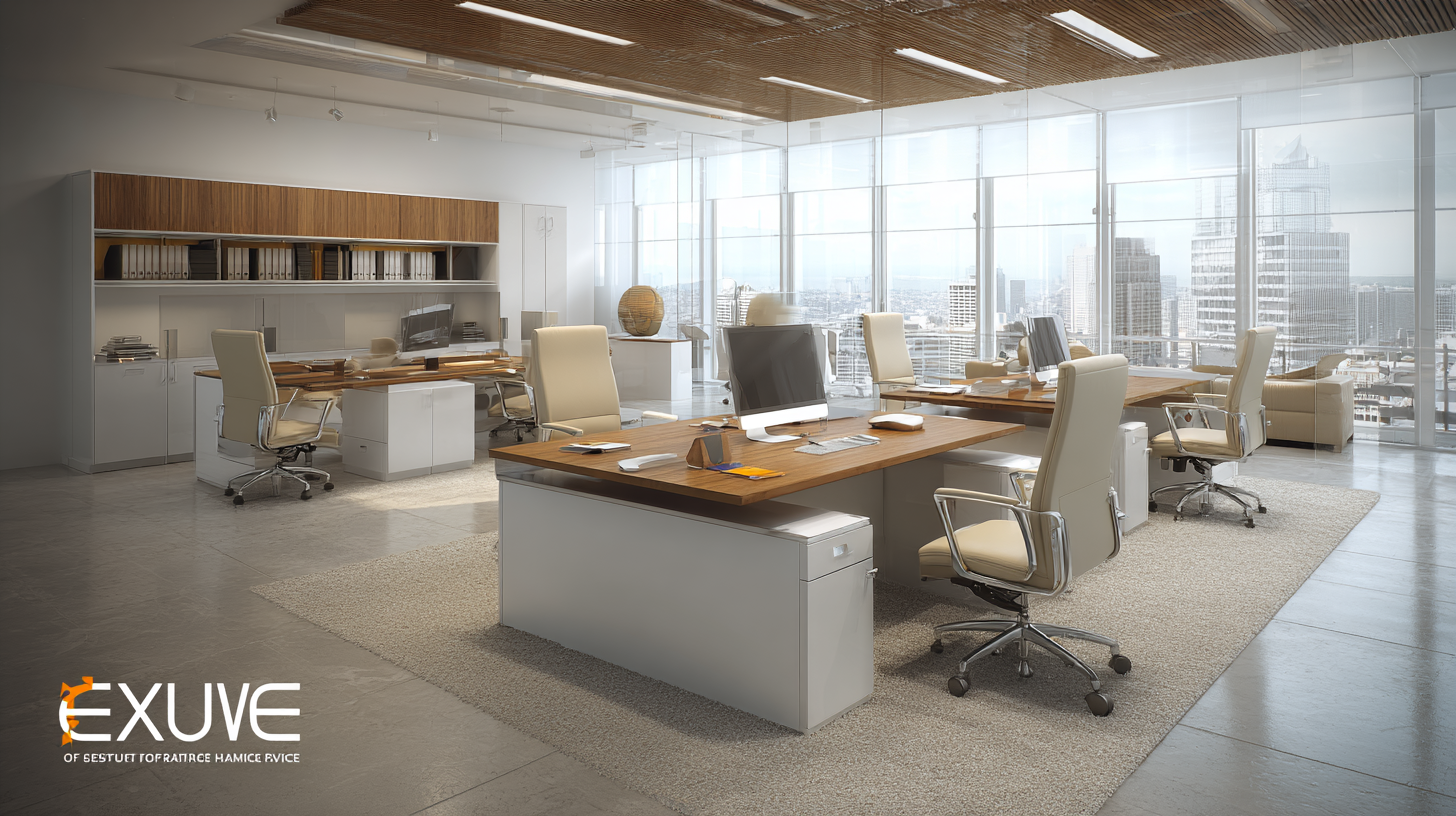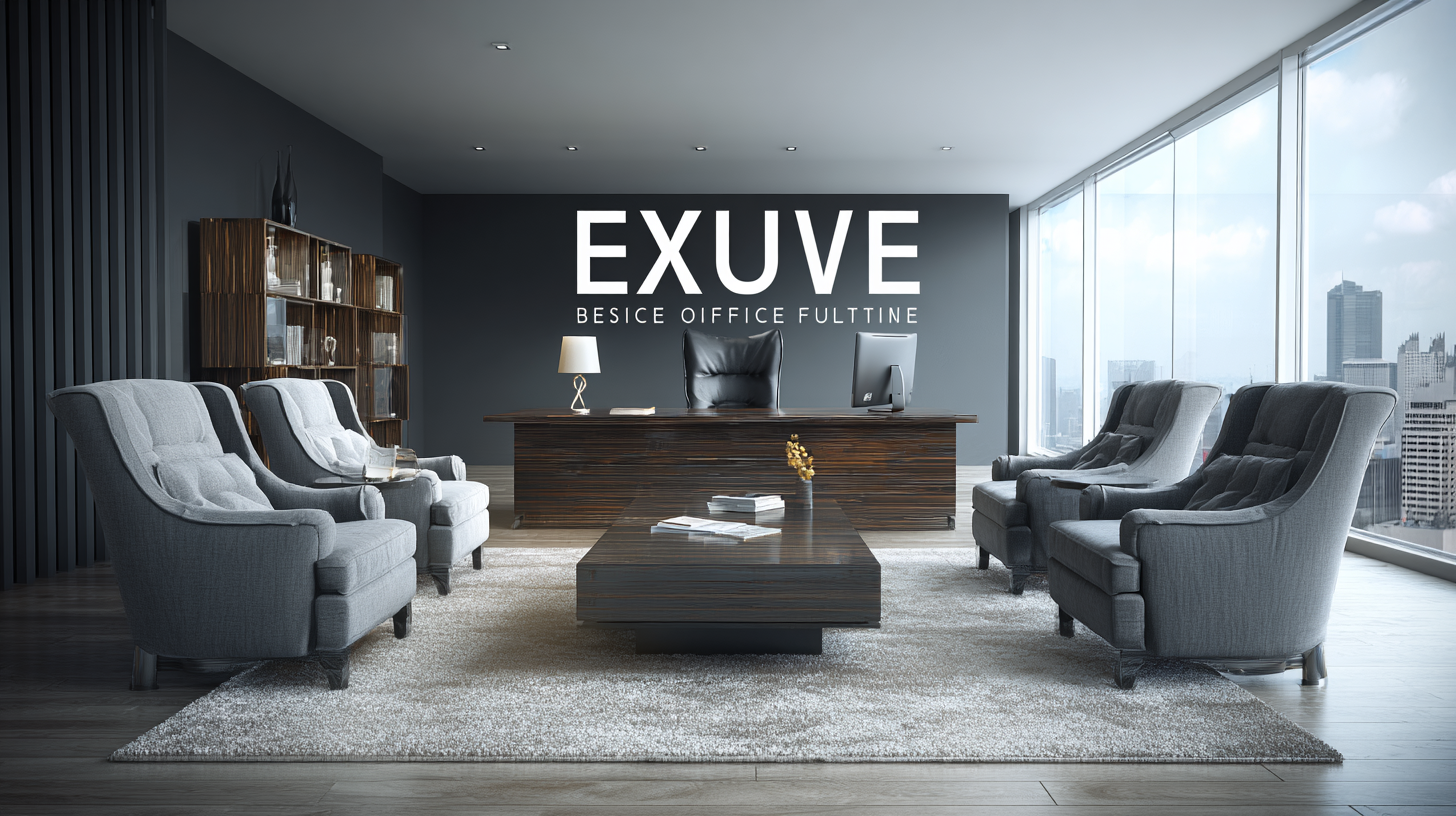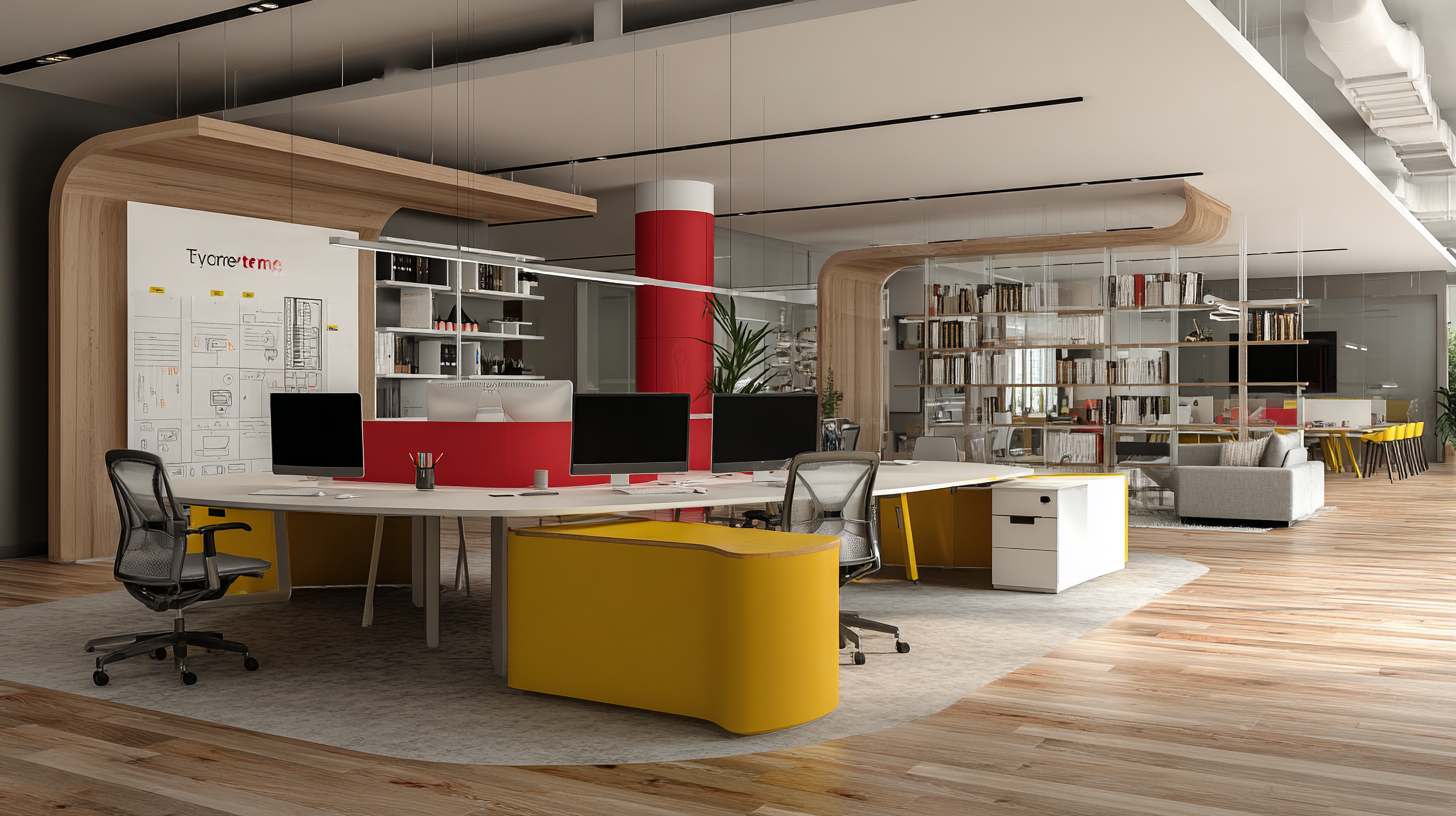Best Executive Office Furniture Trends and Predictions for 2025 in the Corporate Marketplace
As we look ahead to 2025, the landscape of the corporate marketplace is set to evolve significantly, particularly in the realm of Executive Office Furniture. According to a report by MarketsandMarkets, the global office furniture market is projected to reach approximately $84 billion by 2025, driven by the increasing need for innovative and flexible workspace solutions. This growth underlines a shift in corporate design trends, where functionality and aesthetics converge to create environments conducive to productivity and collaboration.

As organizations prioritize employee well-being and adapt to hybrid work models, the demand for versatile and stylish executive office furniture alternatives will intensify, shaping not only the physical workspaces but also the culture within organizations.
This blog will explore the key trends and predictions for executive office furniture, providing insights into how businesses can stay ahead in this dynamic marketplace.
Benefits of Robust After-Sales Service in Executive Office Furniture
In today's competitive corporate marketplace, the selection of executive office furniture goes beyond mere aesthetic appeal; it is equally about ensuring sustained functionality and comfort in the workplace. One crucial factor that organizations often overlook is the significance of robust after-sales service. This aspect not only enhances the user experience but also ensures that businesses can swiftly address any issues that arise with their furniture selections.
Effective after-sales service includes timely maintenance, repair options, and a responsive customer support team ready to assist with any concerns. This level of support fosters a sense of trust and reliability, allowing companies to focus on their core operations without the distraction of furniture-related predicaments. Moreover, a reliable after-sales service can significantly extend the lifespan of office furniture, ultimately leading to greater return on investment and a more sustainable approach to workplace management.
Investing in executive office furniture equipped with strong after-sales support reflects a forward-thinking approach. It is an acknowledgment that the workplace environment directly influences employee productivity and satisfaction. As companies aim for growth in 2025 and beyond, prioritizing robust after-sales service will be a key determinant in fostering a productive and resilient workspace.

Understanding Maintenance Costs for Corporate Furniture Solutions
As companies navigate the complexities of the corporate environment, understanding the maintenance costs associated with executive office furniture is paramount. With the average fit-out costs for offices in Australia and New Zealand projected to rise significantly by 2025, organizations must focus not only on initial investments but also on ongoing expenses. Industry reports indicate that top-performing firms are 4.2 times more likely to leverage managed services partnerships—strategies crucial for optimizing both fit-out and maintenance costs while ensuring a seamless workplace experience.
In light of increasing operational expenses, firms should be proactive in assessing the longevity and upkeep of their furniture solutions. Research shows that with a strategic approach to furniture selection and maintenance, companies can mitigate costs over time. For instance, adaptive furniture designs not only enhance workspace functionality but also allow for easier maintenance, reducing long-term expenditure. Organizations must balance aesthetics with practicality to avoid unnecessary costs while fostering an environment conducive to productivity and employee satisfaction. As firms prepare for the 2025 landscape, prioritizing smart investment in furniture that requires minimal upkeep will be essential for sustained success in a competitive marketplace.

Key Design Trends Influencing Executive Office Spaces in 2025
As we approach 2025, the executive office landscape is poised for transformative changes, driven by the convergence of technology, sustainability, and employee well-being. One of the most significant design trends influencing these spaces is the emphasis on biophilic design, which integrates natural elements into the office environment. This approach not only enhances aesthetic appeal but also improves air quality and boosts productivity by creating a calmer, more inviting atmosphere. Incorporating features like living walls, natural light, and organic materials will become standard, reflecting a growing recognition of the psychological benefits of connecting with nature in the workplace.
Another key trend is the shift towards flexible and multi-functional furniture that caters to the evolving needs of executives. As remote work continues to blur the lines between home and office environments, there is a rising demand for furniture that supports hybrid work styles. Executives will seek adaptable solutions, such as modular desks and collaborative seating arrangements, that allow for seamless transitions between individual tasks and team projects. This flexibility not only maximizes space utilization but also fosters collaboration and innovation among team members, further redefining the executive office paradigm for a modern workforce.
How to Choose Sustainable Office Furniture for a Modern Workplace
As the modern workplace continues to evolve, selecting sustainable office furniture has become a pivotal consideration for businesses aiming to reduce their environmental impact. According to a report by the Global Sustainable Furniture Council, over 70% of companies are now prioritizing sustainability in their purchasing decisions. This shift is not merely a trend but a reflection of a broader commitment to corporate social responsibility, as organizations recognize the importance of fostering a healthier environment for both employees and clients.
When choosing sustainable office furniture, it's essential to look for certifications such as FSC (Forest Stewardship Council) or GREENGUARD, which ensure that products meet rigorous environmental standards. The 2023 Furniture Sustainability Index revealed that organizations investing in sustainable furniture have reported a 30% reduction in overall waste and a significant increase in employee satisfaction. Additionally, incorporating versatile, eco-friendly materials like bamboo or recycled metal can not only enhance aesthetic appeal but also align with a company's sustainability goals, fostering a culture of responsibility within the workforce.
Future-Proofing Your Office: Essential Features to Look for in 2025
As we look ahead to 2025, future-proofing your office is more important than ever, especially in a rapidly evolving corporate landscape. Essential features to consider will include adaptable furniture that can easily accommodate changing work styles and team sizes. Modular desks and movable partitions will not only enhance collaboration but also allow for quick reconfiguration as project needs shift. This flexibility will help create a dynamic workspace that fosters innovation and productivity.
Another critical aspect to keep in mind is the integration of technology into office furniture. As remote work continues to influence traditional office settings, furniture that incorporates tech-savvy solutions, such as built-in charging stations and smart conference tables, will become increasingly valuable. Furthermore, ergonomic design will play a significant role in enhancing employee well-being, as organizations seek to optimize comfort and reduce fatigue. Investing in ergonomic chairs and standing desks will contribute to a healthier work environment, making it crucial for companies aiming to attract and retain top talent in the future.
